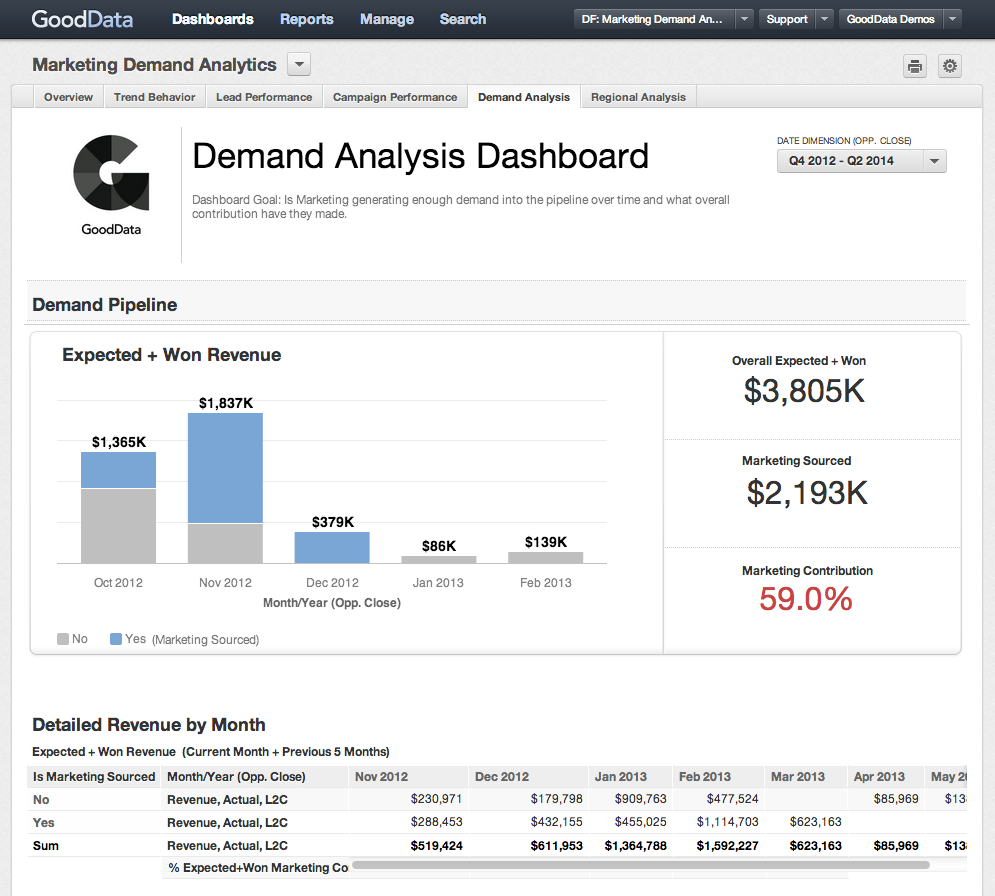You’ve found a marketing automation tool that suits your needs. You’ve ensured the necessary process and expertise are in place to make the most of it. You may have even already mapped out each customer touchpoint from click to close. However, can you say with certainty that your marketing automation software is the hub of your customer experience?
Usually, there is so much data coming in from all directions that you may find yourself in an analysis paralysis. If you’re feeling the pain, you’re not alone. According to a recent survey by Ascend2 and some of its research partners, marketers identified measuring performance as the most critical challenge to achieving automation success.
Here at DemandGen, our clients often turn to us for help with analyzing all the data their marketing automation tool generates. Based on these conversations, I’ve compiled a list of key metrics you should be using to evaluate the success of your campaigns and justify one of your largest marketing investments.
Engagement Metrics
First, you need to understand how your prospects are responding to your campaigns and if you’re sending relevant content that resonates with your audience.
- Site Traffic: Your website traffic is a good indication of the efficacy of your emails. If you experience a spike in traffic after sending a specific campaign, you should be doing more of the same. On the contrary, if you witness a decline in traffic, you should consider testing new strategies.
- Open and Click-Through Rates: These important metrics provide insight into the quality of your lists and emails. Average open and click-through rates vary based on factors such as industry, company size, list provider, and even your subject line. The best practice here is to consider A/B testing so you can continually improve these metrics.
- Unsubscribes: If your unsubscribe rate is higher than 1%, you should perform a list audit and improve your list segmentation. The only exception would be when you send emails to new lists where the unsubscribe rate tends to be higher than 1%.
- Reconversions: Measuring how many times your leads convert — whether by consuming additional content or making a purchase — shows how well your inbound marketing workflow is performing. Look for how many requalified leads you get through your campaigns and how they interact with different types of content.
Performance Metrics
If your prospects are engaging with your content but aren’t taking the next step, or if they’re taking much longer before becoming a qualified lead than your typical sales cycle, then you need to investigate what’s holding them back.
- Marketing Qualified Leads: Only a fraction of your marketing qualified leads (MQLs) will close so the more you generate, the better. Ideally, you should see a steady increase and be able to tell which sources are most effective at generating leads.
- Sales-Accepted Leads: This metric is a great indicator of the health of your lead scoring as well as the alignment of your organization’s sales and marketing teams. If your sales team isn’t accepting your MQLs, then their idea of a qualified lead is different than yours and you need to reconcile the two.
- Marketing and Sales Cycle Length: It’s important to measure the amount of time it takes for a lead to move from the initial touchpoint to a sale. If certain stages of your customer journey are taking too long, your pipeline forecasts will be negatively impacted.
ROI Metrics
Finally, you get to the dollar values so you know what to expect and what actually came in. These are the most tangible metrics for measuring marketing automation ROI and justifying your investment.
- Customer Acquisition Cost: By measuring your customer acquisition cost, you can focus on lowering it by nurturing leads through to conversion more quickly and effectively. It’s a good indicator of how well you’re utilizing your marketing automation platform.
- Conversion Rate: Once you assign values to your leads based on their estimated contract value, you can compare your lead acquisition investment with your other lead generation efforts. The conversion rate is one of the best metrics to justify your marketing ROI.
- Revenue Generated: How does your marketing automation effort translate into actual revenue? This metric shows the most tangible result of your campaigns.
- Customer Lifetime Value: This metric shows you how much a customer will likely spend throughout their journey, and is particularly important for industries such as financial services, retail, and telecommunications.
Everybody uses a marketing automation tool for email marketing these days. However, these tools have evolved from being purely batch-and-blast, lead generation-focused email tools to fully integrated engagement marketing platforms that can manage both the upper and lower funnel of the customer experience. By understanding engagement, performance, and ROI, you can fine-tune your campaigns, shorten your sales cycle, and deliver an experience that converts into revenue.
 Margarita Kitova is a Campaign Services Manager at DemandGen. With years of experience in digital marketing, she provides a strategic campaign framework that helps ensure flawless client campaign execution and aims to turn our clients into marketing heroes.
Margarita Kitova is a Campaign Services Manager at DemandGen. With years of experience in digital marketing, she provides a strategic campaign framework that helps ensure flawless client campaign execution and aims to turn our clients into marketing heroes.
The post Knowing What to Look for: Key Metrics for Evaluating Your Marketing Automation Efforts appeared first on DemandGen.
























